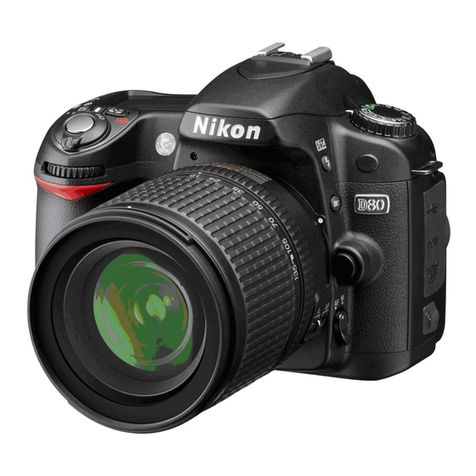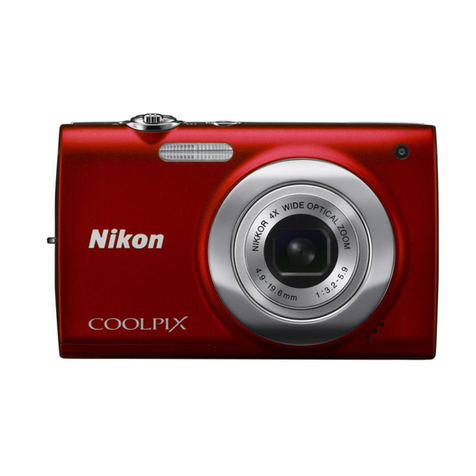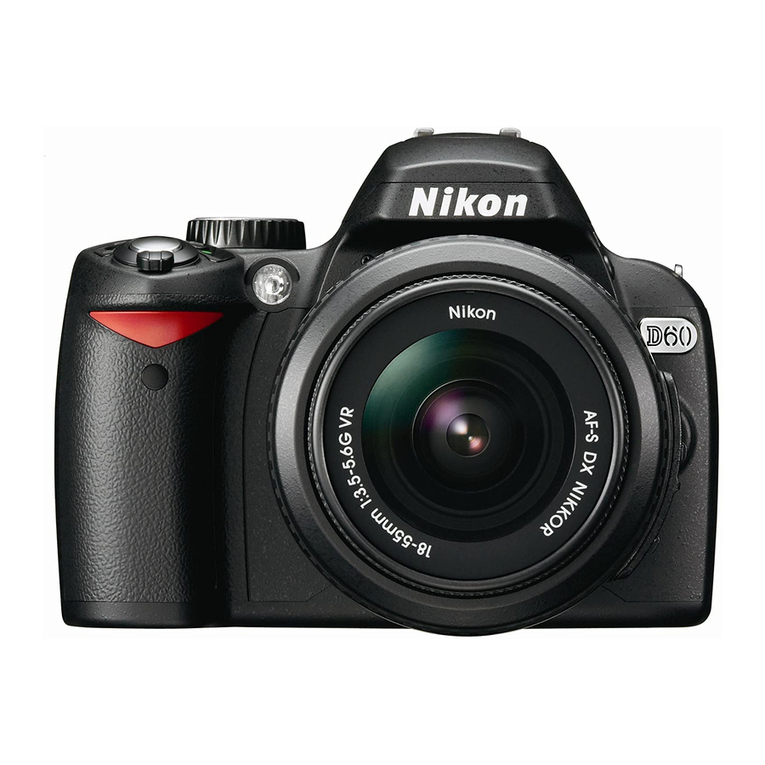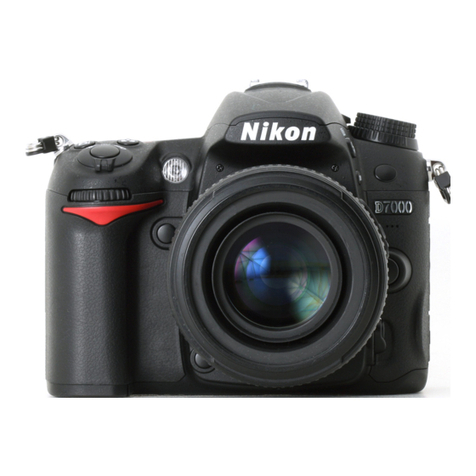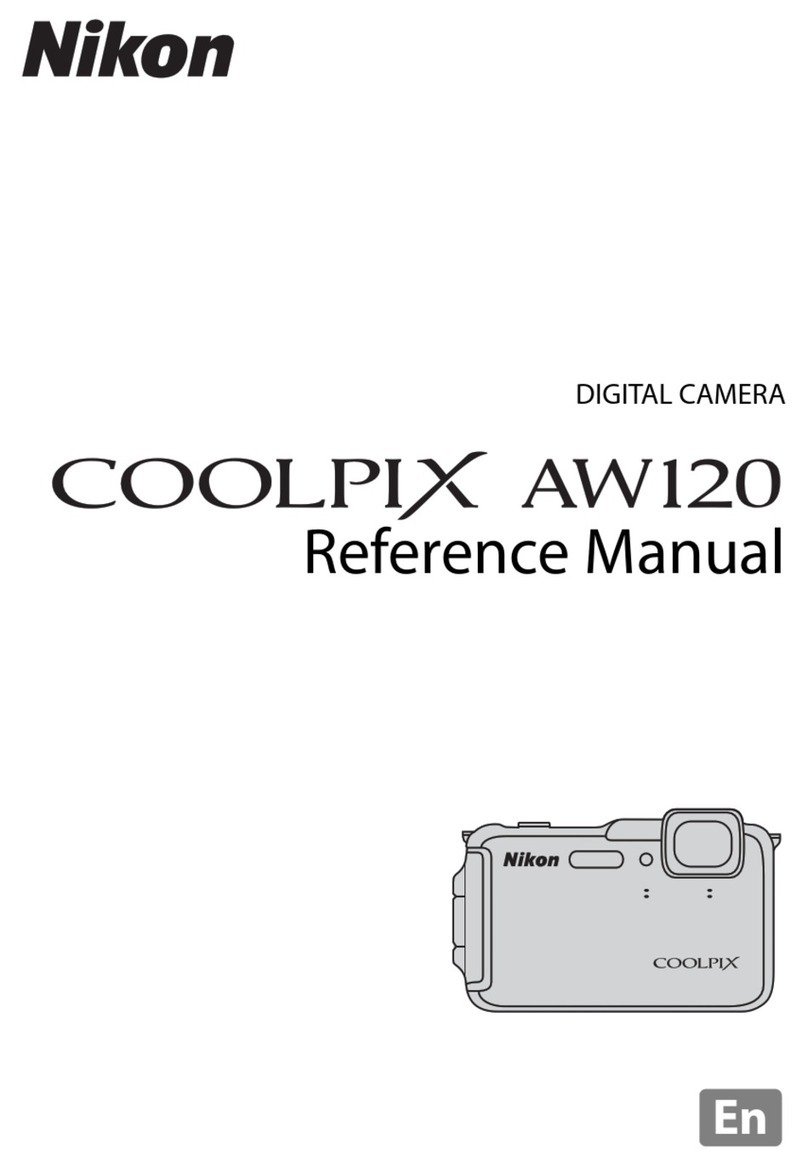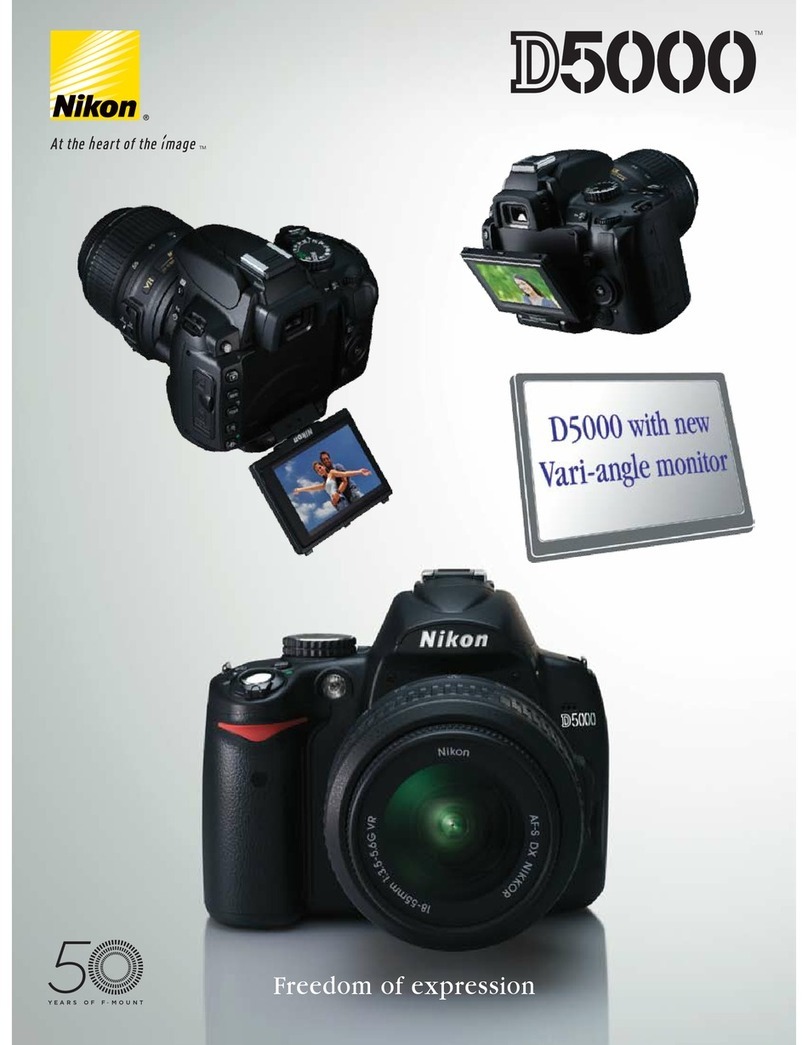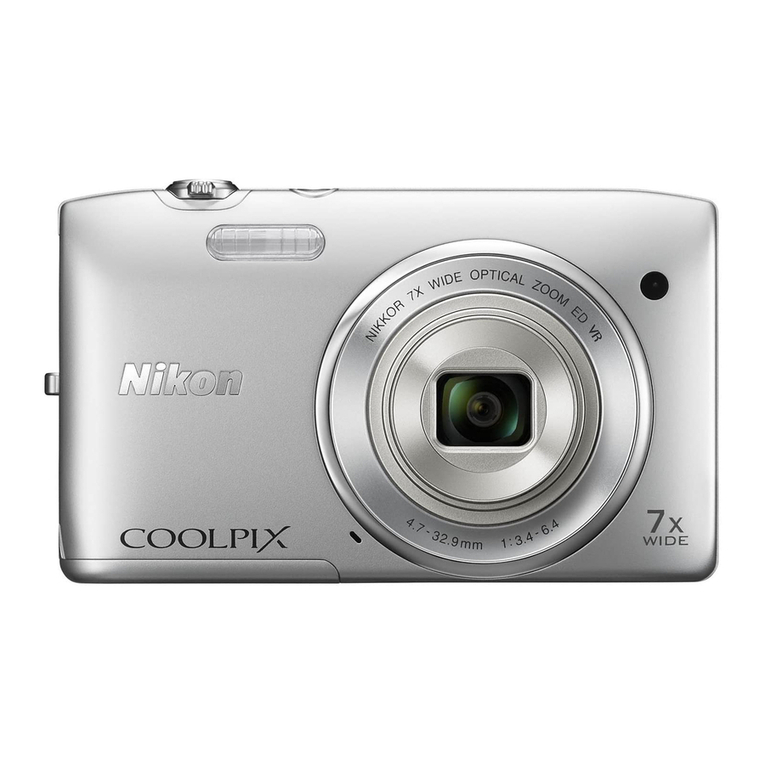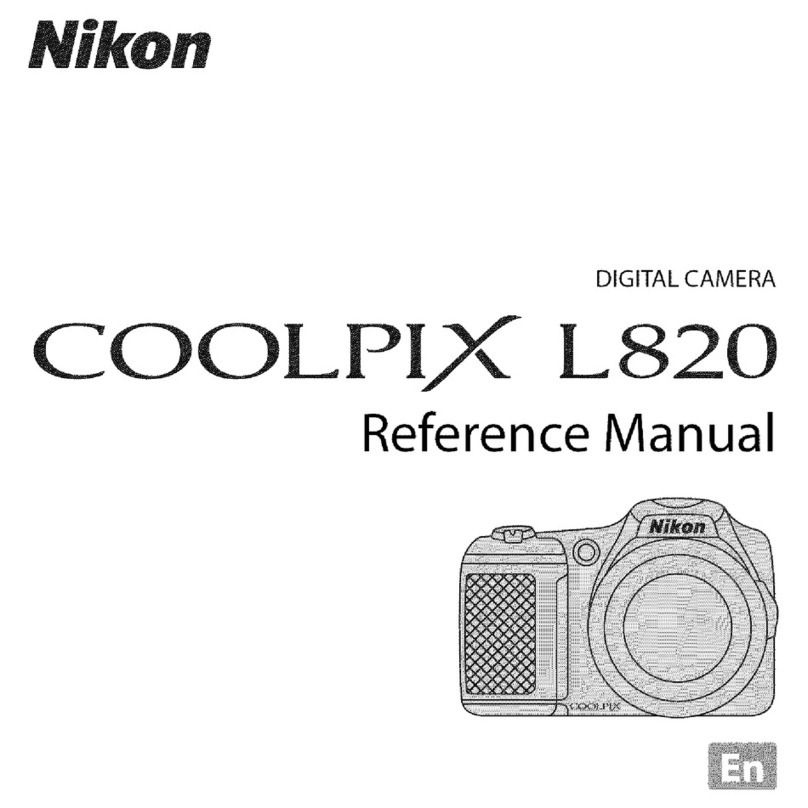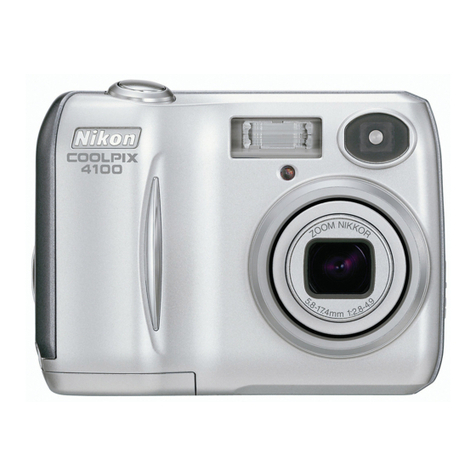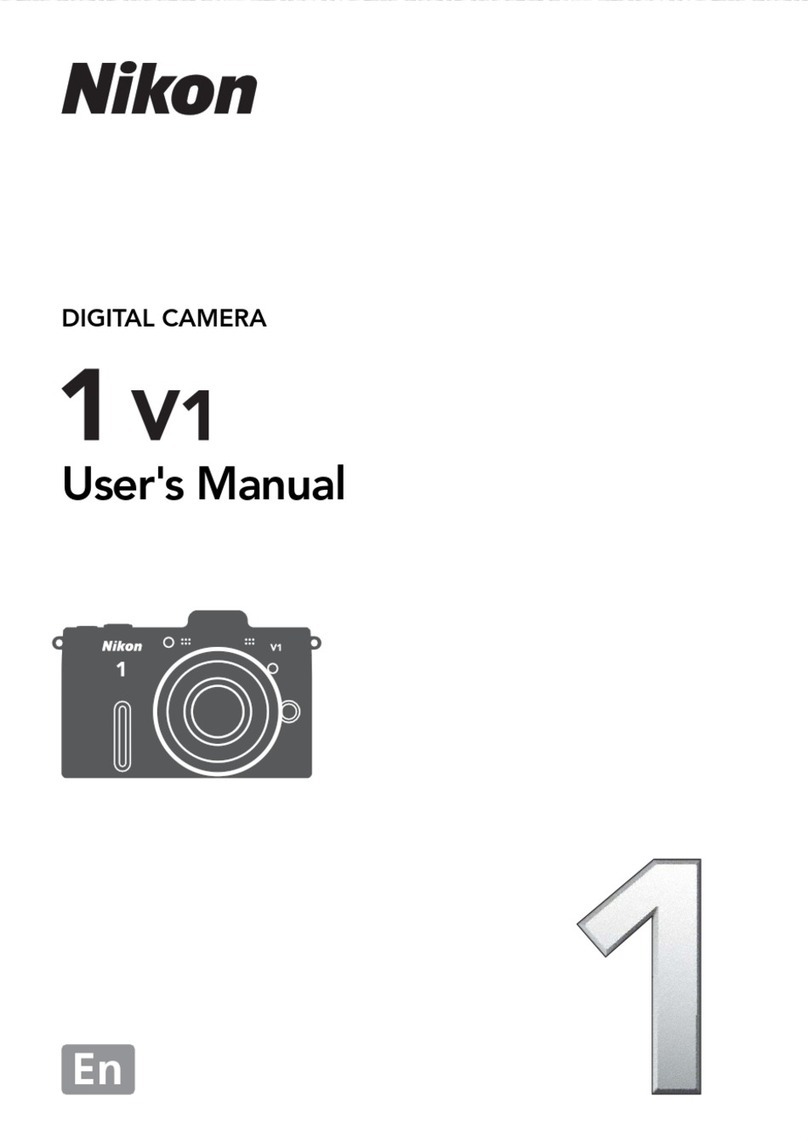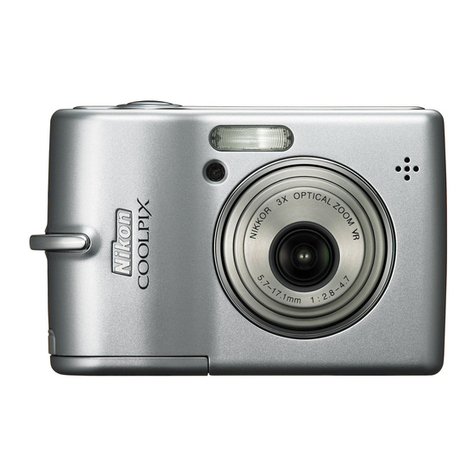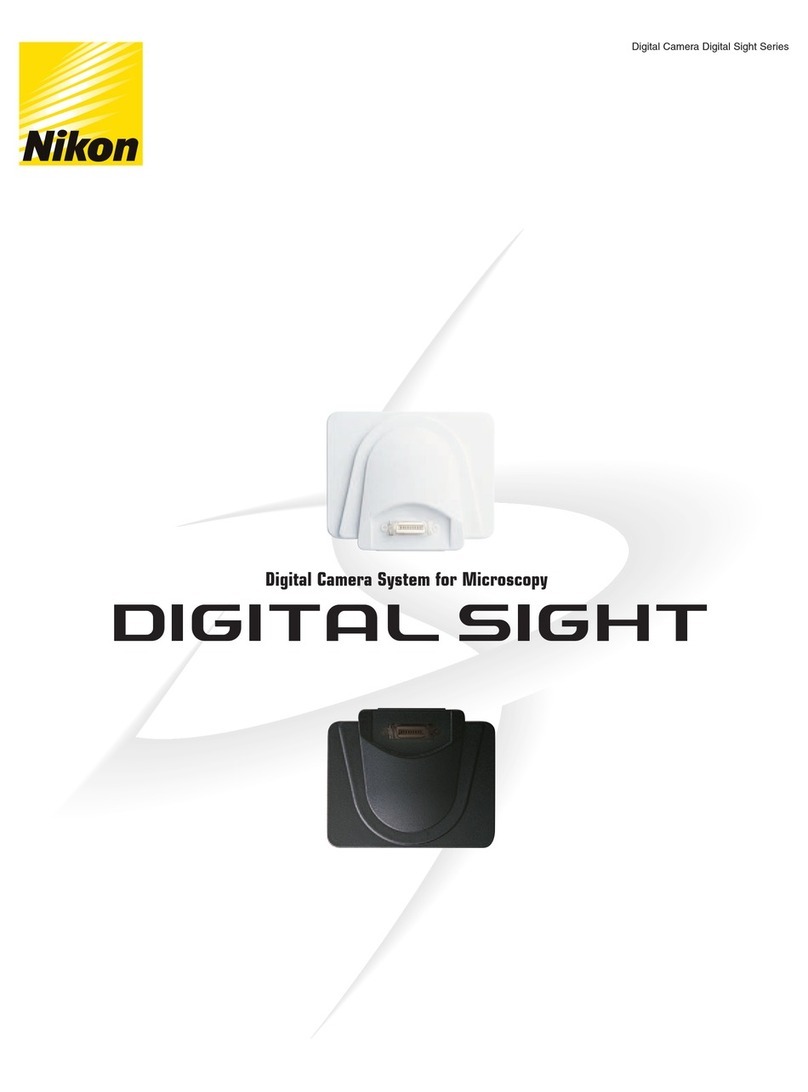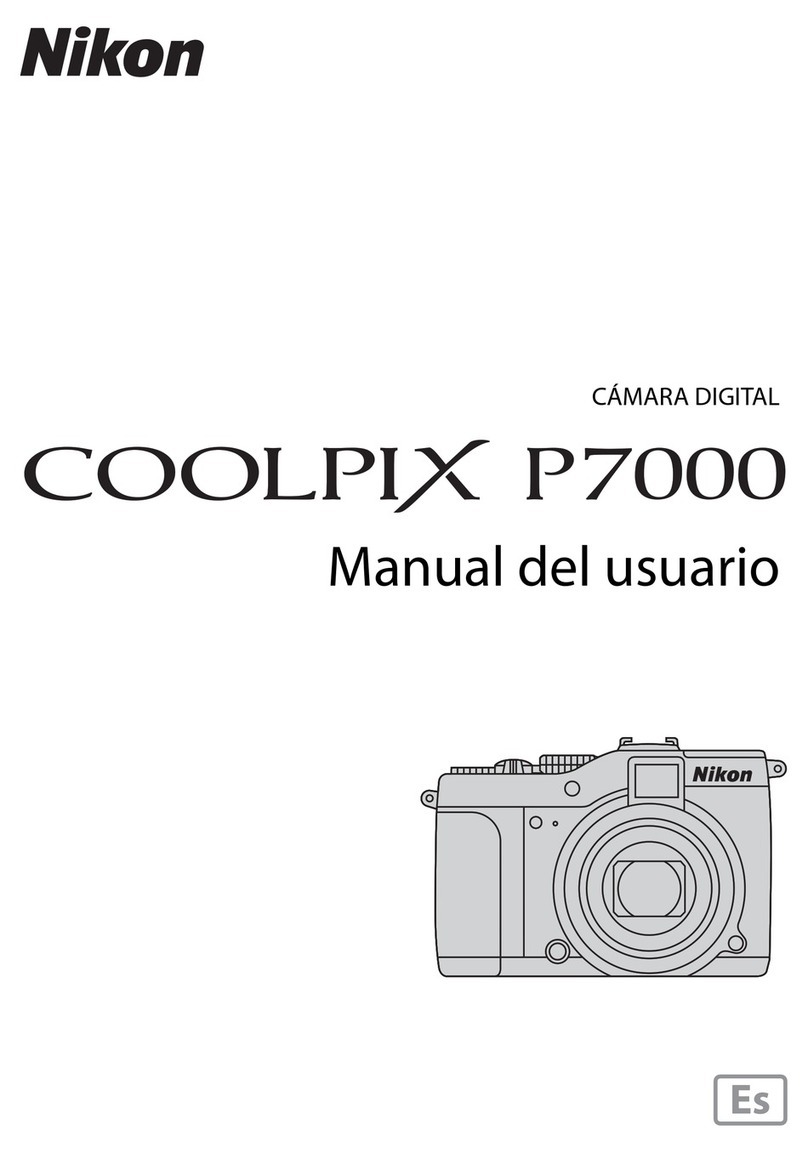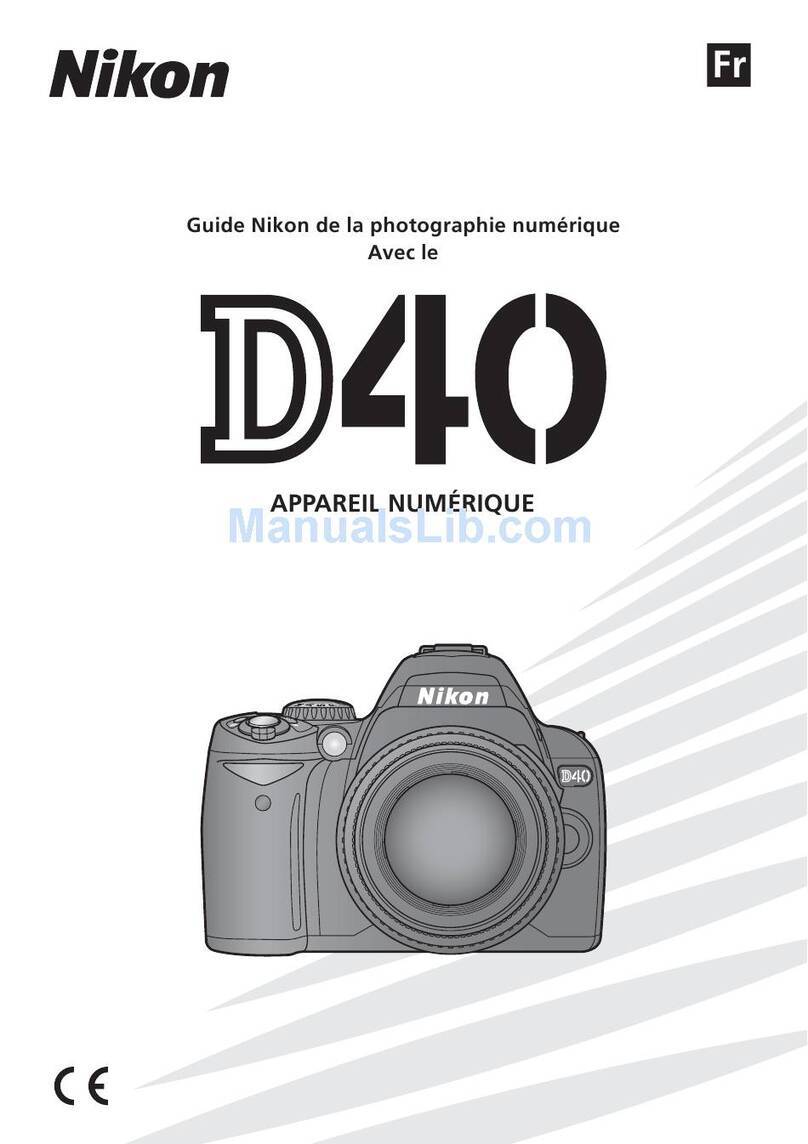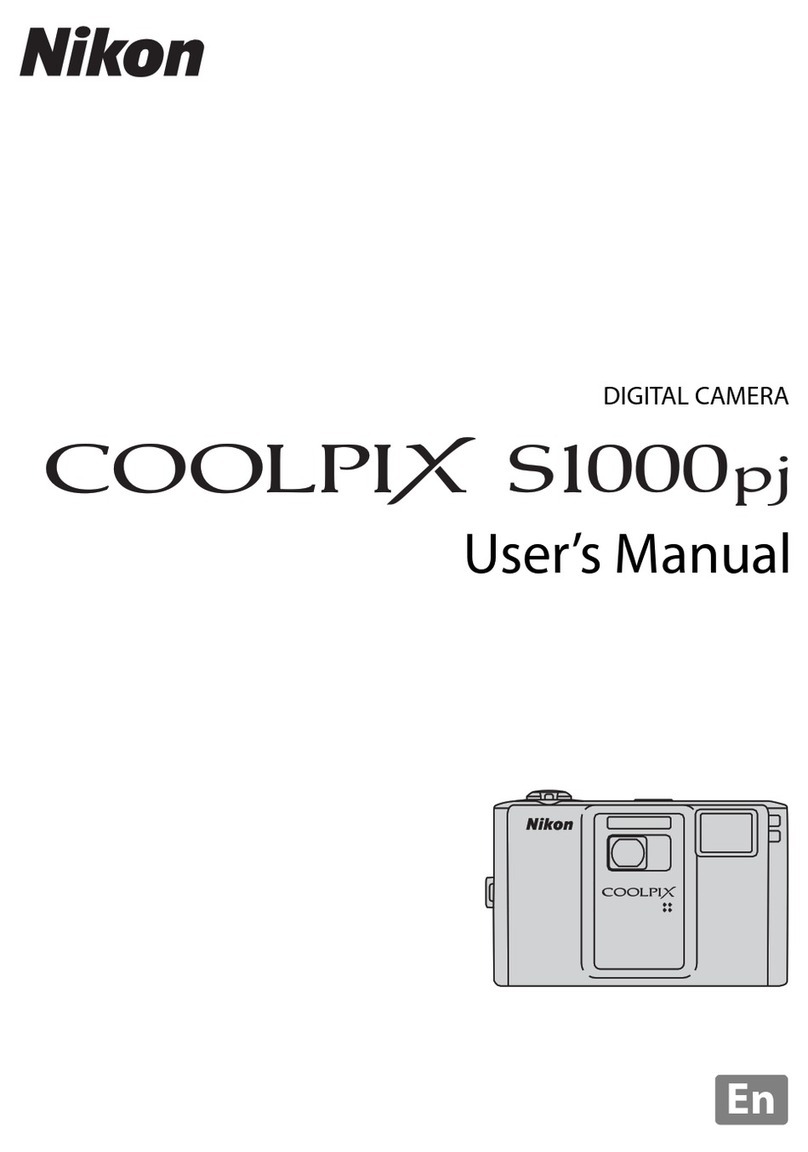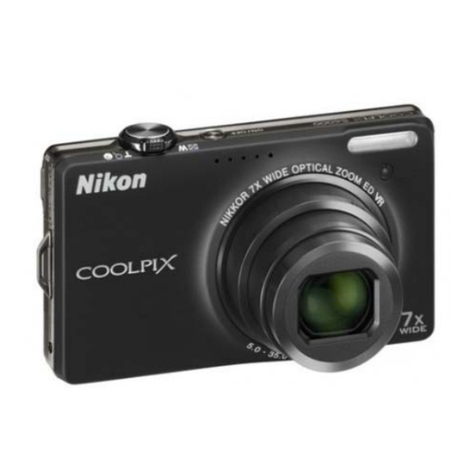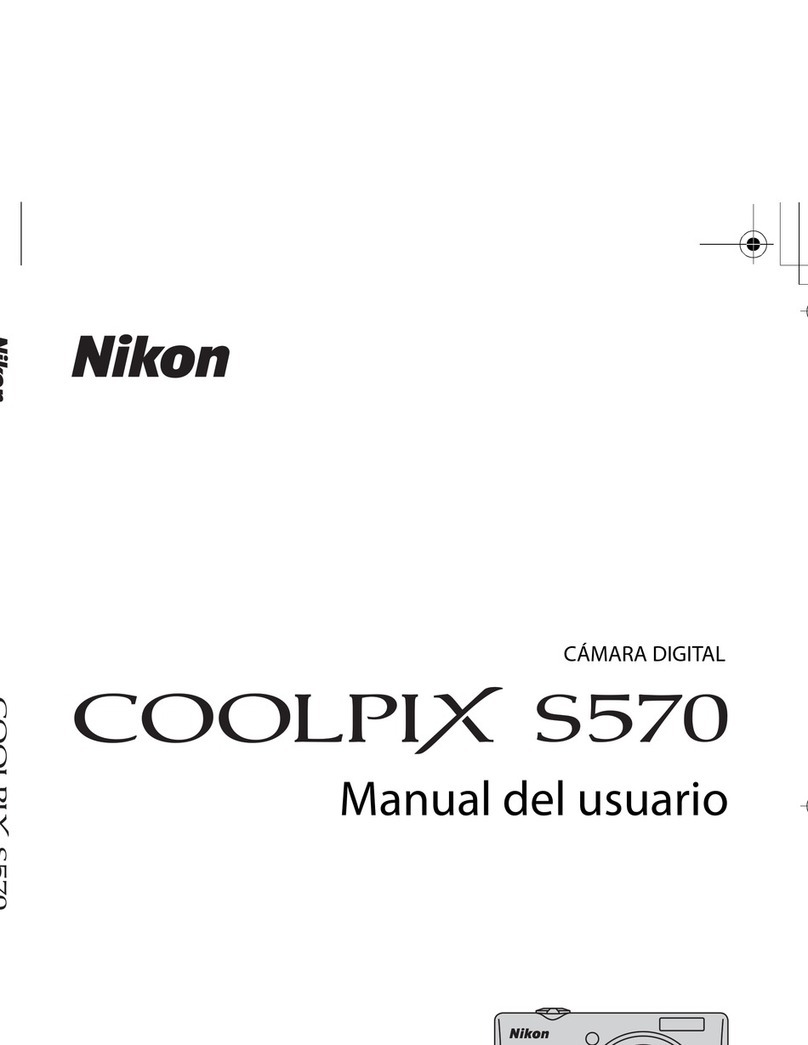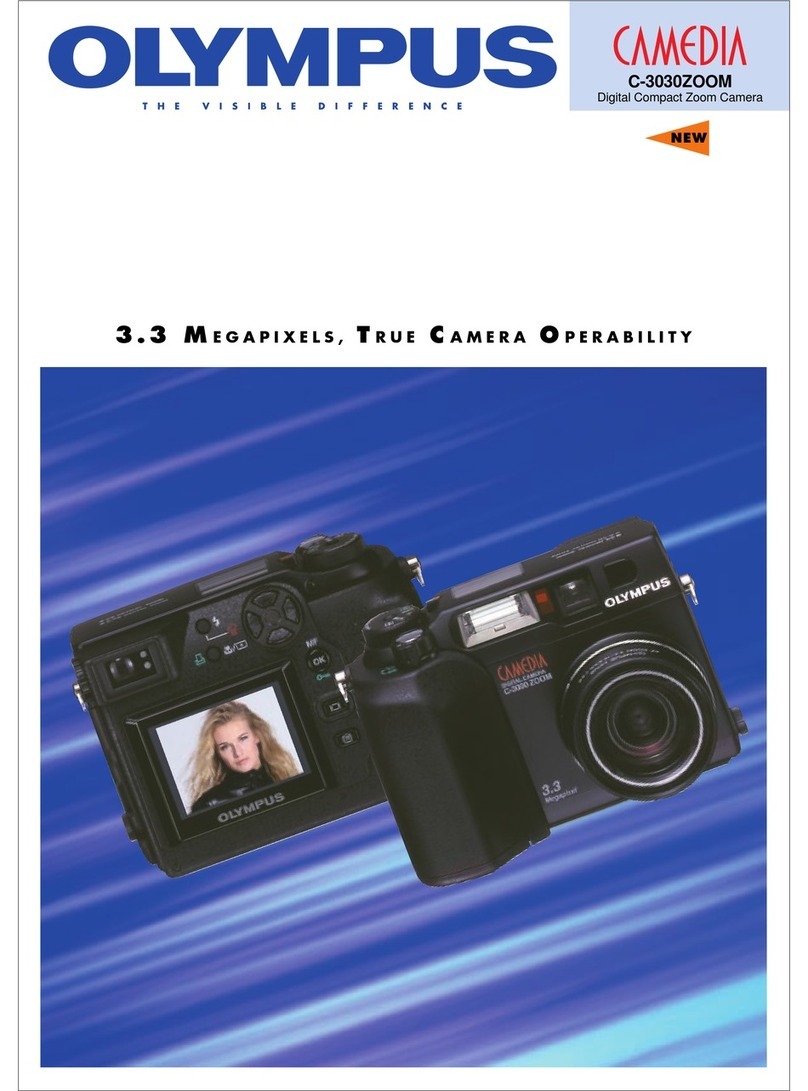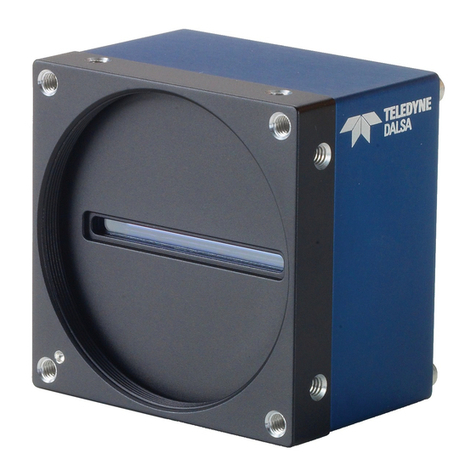6
PREPARATION FOR USE
Installing the Batteries
The Nikon FM’s built-in exposure meter is powered by two
button-cell type 1.5V silver-oxide batteries. These are
mounted in the battery clip, which forms a single unit with
the battery chamber’s coin-slotted lid, in the camera’s base-
plate. To install the batteries, first unscrew the lid by turning
it counterclockwise, with a coin or something similar, until it
can be freely removed by hand. Then, seat the two batteries
in the battery clip, one on top of the other, making sure that
their respective plus (+) and minus ( - ) indications corre-
spond with similar marks provided in the clip. After seating
the batteries correctly, replace the lid, and secure the con-
nection by turning it clockwise with the coin as far as it will
go. It is advisable to remove the batteries, when the camera
is not to be used for a long period, to prevent battery leakage
within the camera; for additional information on this, refer
to “Tips on Camera Care” on page
Checking Battery Power
To check battery power, move the camera’s film advance le-
ver from the flush to the stand off position by pulling it just
far enough to uncover the red index on top of the camera.
Then, look through the viewfinder. If any of the LED (light
emitting diode) exposure indicators is on, battery power is
sufficient for proper operation. Otherwise, check battery seat-
ing and make adjustments, if necessary. Should the LED dis-
play still fail to light up, change batteries.
Important: When the camera is not in use, make sure
that the film advance lever is positioned flush with the cam-
era body.As the lever doubles as the meter on/off switch, leav-
ing it in the stand-off position will result in the camer4’s bat-
tery being completely drained in just a few days.
